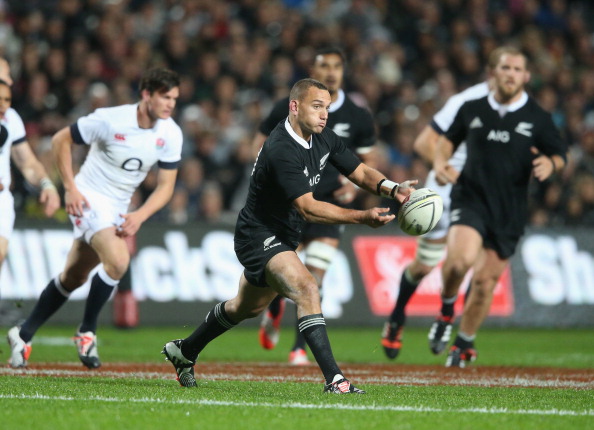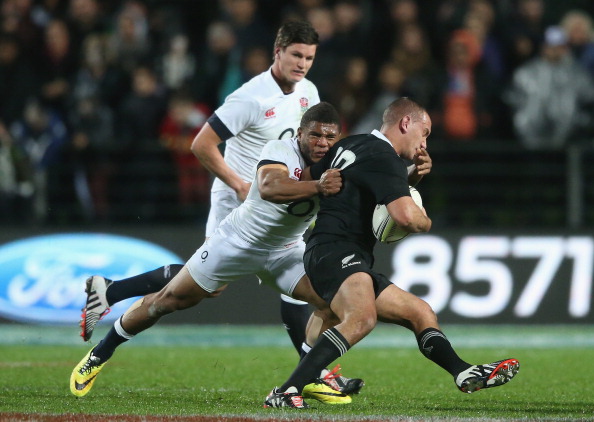Stuart Lancaster’s charges will be in the hunt for World Cup glory in 2015 but they have some wounds to lick. Here are 5 facets to take from their tough tour
One New Zealand newspaper called on their team to “send a message to the world” this week, to seal a series whitewash with authority and remind everyone that – though England have competed gamely this month – Kiwi defeat is unthinkable.
As it was, Steve Hansen’s men needed little over half an hour. When Aaron Smith crossed for the hosts’ fourth try in Hamilton on 33 minutes, the All Blacks had dismantled England with a mauling that sent tremors around the planet.
All Blacks intensity scrambles England’s instincts
Though they set off on the wrong foot thanks to an undercooked Freddie Burns kick-off, England immediately recovered when Ben Youngs harassed Kieran Read from the first scrum. Chris Robshaw was all over Richie McCaw (more of that later) and Jerome Garces gave a penalty. Though Burns sent his attempt wide, it seemed the tourists were primed for battle.
Then it slid away. England’s defensive system is a fearsome beast at its best.
However, the sheer pace New Zealand played at – taking lineouts rapidly, smashing rucks to give Aaron Smith a pristine platform – did not allow it to get set. The destructive “destroy and enjoy” linespeed that Andy Farrell has engendered is founded on a proactive mind-set. The All Blacks’ urgency forced England to be reactive, tentative. It was rabbit-in-the-headlights confusion. Aaron Cruden glided, Julian Savea scythed and Ben Smith was Ben Smith – bloomin’ brilliant. Half-time came and England had missed 13 tackles. When you leak seven line-breaks and four tries before the break, you are sunk in any game.
Patience and perseverance – virtues that reap rewards
Caught in the eye of a midfield storm, Kyle Eastmond got hauled off to define a key difference between these two teams over three games – consistency in selection. Just 26 men represented New Zealand this series. England called on 33. Rewind to 16 days ago in Auckland. Eastmond outplayed Ma’a Nonu, making nine tackles without missing one. Perhaps he could have built on that had he kept the number 12 shirt for Dunedin. We’ll never know.
Lancaster is hardly at fault. The scheduling of this trip was totally shambolic and he had to trust those who excelled during the Six Nations when they became available. Courageous displays over the first two games and during the Crusaders victory demonstrate England’s enviable strength in depth. But that is only useful if a best 23 is identified and stuck by for most of the remaining 12 Tests before September 2015. New Zealand’s immense success is built on such loyalty – decisions such as retaining hooker Dane Coles after an uncertain night in Auckland. Hansen knew the talent was there and he’d get better. So it proved.
Robshaw: Unbowed
The All Blacks are now level with the world record of 17 consecutive victories among tier one nations (in the lower echelons of international rugby, Cyprus are currently on a golden run of 23 wins). They can genuinely profess to being the planet’s outstanding sports team, transcending rugby alone. Before this series, a composite side may have included a few Poms – Dylan Hartley maybe, Courtney Lawes and Mike Brown too. That trio looked tired, and could not influence as they would have liked. Geoff Parling was very close to Sam Whitelock, but just one other tourist looked fully worthy of wearing black.
Driven by insatiable desire for individual improvement, Chris Robshaw bettered Richie McCaw in all aspects over three games – getting over the ball at the breakdown, carrying, defensive work-rate. From his galloping burst in the opening minute of the series and throughout, he was a Harlequin possessed. At Forsyth Barr Stadium a week ago, Robshaw tallied 19 tackles and two turnovers – hitting 25 rucks along the way. Those are statistics of a world-class openside, as if he needs to justify himself to anyone any more.
Three contrasting gems
It was harder to pick positives from the rubble of Saturday’s reverse – Auckland and Dunedin offered longer periods of encouragement. Still, three men showed themselves to be important parts of the 2015 jigsaw. Youngs shook off indifferent form to spark everything good about England’s evening with a series of fine snipes and harrying defence. Scrum-halves often need a second wind to inject their career with impetus. He and Danny Care are an excellent 80-minute combination to go forward with.
Marland Yarde’s defensive uncertainty will ease and is not damaging enough to ignore some serious potency as a runner. His predatory try this weekend was a fourth in five Tests. Finally, Kieran Brookes looks hugely exciting. In 28 minutes on the field this series, he won three scrum penalties. That’s an eye-catching strike-rate, and one that means England have their third tighthead prop to develop behind Dan Cole and David Wilson.
All roads lead to Twickenham
New Zealand’s trip to Twickenham in November not only makes it five meetings between them and England in a calendar year; it marks the start of a momentous month for Lancaster’s team. In subsequent weeks, they face South Africa, Samoa and Australia at a venue from which they will mount an offensive on a World Cup. Three wins is a bare minimum. Refreshingly, those standards are very attainable too.
https://www.youtube.com/watch?v=v5192PKjB7Q







